ELECTROLUX END33601X User Manual
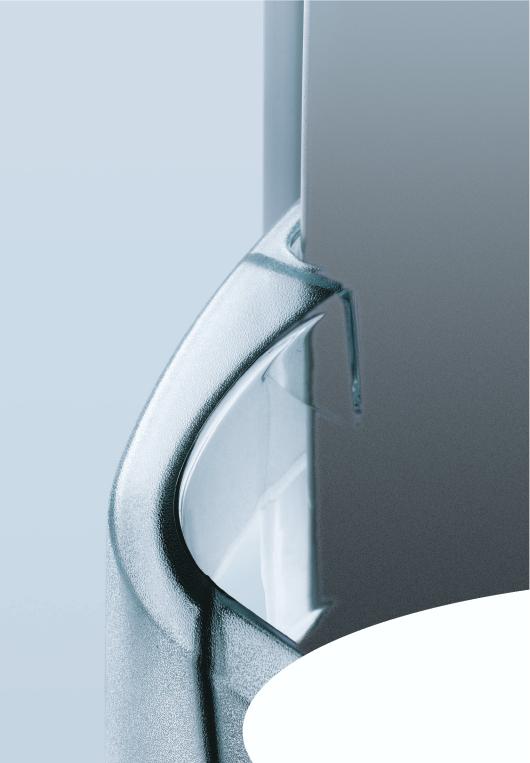
NO-FROST REFRIGERATOR
Freezer-Fridge
Instruction booklet
RÉFRIGÉRATEUR A FROID VENTILE
Réfrigérateur - Congélateur
Guide d’utilisation
FRIGORÍFICO CON TECNOLOGÍA NO FROST
Congelador - Frigorífico
Manual de Instrucciones
FRIGORIFICO “NO FROST”
Congelador - Frigorífico
Manual de Instruções
NO-FROST
(ΧΩΡΙΣ ΠΑΓΟ) Ψυγείο
Οδηγίες Χρήσης
END33601X

Index
BEFORE USING THEAPPLIANCE ..................................................................... |
2 |
Recommendations ............................................................................................................ |
3 |
Installation and Switching On The Appliance ................................................................. |
4 |
Before Switching On .......................................................................................................... |
4 |
THE VARIOUS FUNCTION AND POSSIBILITIES ............................................... |
5 |
Thermostat Setting ............................................................................................................ |
5 |
ACCESSORIES .................................................................................................. |
6 |
Ice tray ................................................................................................................................. |
6 |
ARRANGING FOOD IN THE APPLIANCE .......................................................... |
7 |
Refrigerator Compartment ............................................................................................... |
7 |
Freezer Compartment ....................................................................................................... |
7 |
CLEANING AND MAINTENANCE ....................................................................... |
8 |
Defrosting .......................................................................................................................... |
8 |
Replacing The Light Bulb ................................................................................................. |
9 |
TRANSPORTATION AND CHANGING OF INSTALLATION POSITION ............... |
9 |
Changing of Door Opening Direction .............................................................................. |
9 |
BEFORE CALLING YOUR AFTER SALES SERVICE ......................................... |
10 |
THE PARTS OF THE APPLIANCE AND THE COMPARTMENTS ....................... |
11 |
UK - 1 -

PART- 1. BEFORE USING THE APPLIANCE
Special Instructions
•If the model contains R600a-see name plate under refrigerant (the coolant isobutane), naturals gas that, is very environmentally friendly but also combustible. W hen transporting and installing the unit care must be taken to ensure that none of the refrigeration circuit components become damaged. In the event of damage avoid naked flames or ignition sources and ventilate the room in which the unit is placed for a few minutes.
Warning: Keep ventilation openings in appliance enclosure or in structure for building in, clear of obstruction.
•Do not use mechanical devices or other artificial means to accelerate the defrosting process.
•Do not use electrical appliances in the refrigerator or freezer compartment of the appliance.
•If this appliance is to replace an old refrigerator with a lock; break or remove the lock as a safety measure before storing it, to protect children while playing might lock themselves inside.
•Old refrigerators and freezers contain insulation gases and refrigerant, which must be disposed of properly. Entrust the disposal of a scrap unit categorically to competence of your local waste disposal service and contact your local authority or your dealer if you have any questions. Please ensure that the pipe of work of your refrigerating unit does not get damaged prior to being picked-up by the relevant waste disposal service.
Important note:
Please read this booklet before installing and switching on this appliance. The manufacturer assumes no responsibility for incorrect installation and usage as described in this booklet.
UK - 2 -

Recommendations
Warning: Do not use mechanical devices or other means to accelerate the defrosting process, other than those recommended by the manufacturer. Do not use electrical appliances inside the food storage compartments of the appliance, unless they are of the type recommended by the manufacturer. Keep ventilation openings, in the appliance enclosure or in the built-in structure, clear of obstruction. Do not damage the refrigerant circuit.
•Do not use adopters or shunts which could cause overheating or burning.
•Do not plug old, warped power supply cables.
•Do not twist and bend the cables.
•Do not allow children to play with the appliance. Children must NEVER sit on drawers/shelves or hang from the door.
•Do not plug the power supply with wet hands.
•Do not place containers (glass bottles or tin containers) of liquids into the freezer especially gassy liquids as they could cause the container to burst during freezing.
•Bottles, which contain a high percentage of alcohol must be sealed well and placed vertically in the refrigerator.
•Do not touch the cooling surfaces, especially with wet hands as you could be burnt or hurt.
•Do not eat ice, which have just been removed from the freezer.
•If the supply cord is damaged it must be replaced by the manufacturer or service agent or appointed qualified person.
•The appliance is not intended for use by people (including children) with reduced physical, sensory or mental capabilities, or lack of experience and knowledge, unless they have been given supervision or instruction concerning use of the appliance by a person responsible for their safety. Children should be supervised to ensure that they don’t play with the appliance.
•If the supply cord is damaged it must be replaced by the manufacturer or service agent or similary qualified people in order to avoid a hazard.
UK - 3 -

Installation and Switching On The Appliance
•This appliance is connecting to 220-240V and 50 Hz.
•You can offer help from the service to install and switching on the appliance.
•Before making the connection to the power supply, ensure that the voltage on the nameplate corresponds to the voltage of electrical system in your home.
•If the socket does not match the refrigerator plug, replace the plug with a suitable one (at least 16 A)
•Insert the plug into a socket with an efficient ground connection. If the socket has no ground contact, we suggest you call an electrician for assistance.
•Manufacturer is not responsible for failure to complete the ground connection as described in this booklet.
•Do not place the appliance in direct sunlight.
•Do not use in open air and shall not be exposed to the rain.
•Place the refrigerator far from heat sources and in a
well-ventilated position. The refrigerator should be at least 50 cm from radiators, gas or coal stoves and 5 cm far from electrical stoves.
•Keep the top free for at least 15 cm.
•Do not place heavy and lots of things on the appliance.
•If the appliance is installed next to another refrigerator or freezer, observe a minimum distance of 2 cm to prevent condensation.
•The appliance must be stand firmly and level on the floor Use the two front levelling-feet to compensate for an even floor.
•In order to have air circulation under the appliance, the space under the appliance must be open. Don’t close it with carpet, etc.
•The outside of the appliance and the accessories inside should be cleaned with a solution of water and liquid soap; the inside of the appliance with sodium bicarbonate dissolved in lukewarm water. After drying replace all the accessories.
Before Switching On
•Wait after 3 hours before plugging the appliance in to the main power to ensure proper performance.
•There can be an odour when you first switch on the appliance. It will disappear after the appliance starts to cool.
UK - 4 -
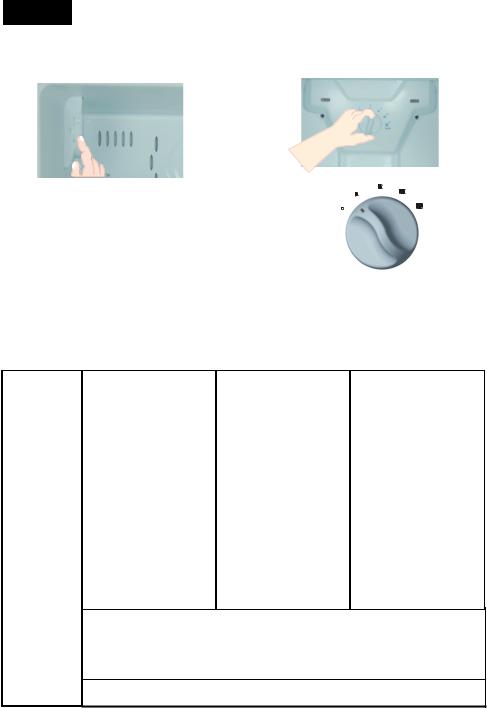
PART- 2. THE VARIOUS FUNCTION AND POSSIBILITIES
Thermostat Setting
FREEZER THERMOSTAT |
REFRIGERATOR THERMOSTAT |
Freezer and refrigerator thermostat automatically regulates the inside temperature of the compartments. By rotating the freezer thermostat knob from position 1 to 4 and refrigerator thermostat knob from MIN to MAX, colder temperatures can be obtain. In cold seasons, you can set lower positions in order to decrease the energy consumption.
|
|
3 |
4 |
|
2 |
|
|
|
|
|
|
1 |
|
|
5 |
|
|
|
MIN
 6
6
MAX
Note that; freezer and refrigerator temperatures affect each other. For example; when the refrigerator thermostat is at maximum, for obtaining lower temperatures in refrigerator compartment, set the freezer thermostat to a higher value. When the freezer thermostat is at its maximum, for obtaining lower temperatures in freezer compartment, set the refrigerator thermostat to a lower value.
CLIMATE |
WINTER |
SPRING / AUTUMN |
SUMMER |
Ambient |
10oC < T < 16oC |
16oC < T < 25oC |
25oC < T < 43oC |
temperateure |
amb |
amb |
amb |
|
|
|
|
Cooler |
Set to appropriate position |
Set to appropriate position |
Set to appropriate position |
Thernostat |
between 1 and 2. |
between 2 and 3. |
between 3 and 6. |
|
Positions 2.5 and 3 would |
Positions 2.5 and 3 would |
Positions 2.5 and 3 would |
|
be enough according to be enough according to be enough according to |
||
|
your refrigerator model. |
your refrigerator model. |
your refrigerator model. |
Freezer |
If your refrigerator is in an |
|
With ambient temperatures |
Thermostat |
extremely cold place with |
|
over 38oC, if your cooler |
|
an ambient temperature of |
|
compartement is not cool |
|
10oC, and if you think the |
|
enough as you want, you |
|
cooler compartement is |
|
can set freezer thermostat |
|
cold with cooler thermostat |
|
to higher positions. |
|
set to minimum, you can |
|
|
|
set freezer thermostat to |
|
|
|
lower positions. |
|
|
|
|
||
|
Default positions values of your refrigerator are 2.5-3 for freezer compartement |
||
|
thermostat, and 3 for cooler compartment thermostat. |
|
|
Remar ks |
We advise you not to change your freezer thermostat positions except above |
||
mentioned conditions. Your cooler thermostat can be set according to the ambient |
|||
|
temperature as mentioned above. |
|
|
The values mentioned in the table are recommended thermostat positions. These values can change according to usage conditions.
UK - 5 -
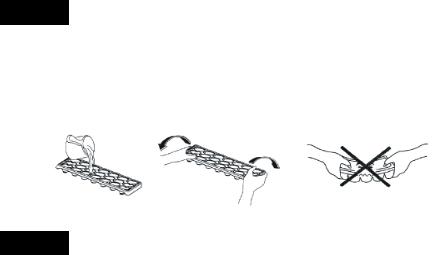
Note that; the ambient temperature, temperature of the freshly stored food and how often the door is opened, affects the temperature in the refrigerator and freezer compartment. If required, change the temperature setting.
•In order to prevent sweating and accumulation of bacteria inside the refrigerator compartmen, it is recommended not to set the refrigerator thermostat to MIN position even there is no storage of food inside.
•When you first switch on the appliance, for starting a suitable cooling, the appliance
should work 24 hours continuously until it cools down to sufficient temperature.
•In this time do not open the door so often and do not place a lot of food inside the appliance.
•If the unit is switched off or unplugged, you must allow at least 5 minutes before restarting or re-plugging the unit in order not to damage the compressor.
•It is suggested to freeze fresh foods at the upper shelf and far from the thermostat.
PART- 3. ACCESSORIES
Ice tray
•Fill the ice tray with water and place in freezer compartment.
•After the water completely turned into ice, you can twist the tray as shown below to get the ice cube.
PART- 4. ARRANGING FOOD IN THE APPLIANCE
Refrigerator Compartment
•To set the refrigerator compartment to 2-3 graphic bar will be enough for normal conditions.
•To reduce humidity and consequent increase of frost never place liquids in unsealed containers in the refrigerator.
•Never place warm food in the refrigerator. Warm food should be allowed to cool at room temperature and should be arranged to ensure adequate air circulation in the refrigerator compartment.
•Arrange the meat and cleaned fish (wrapped in packages or sheets of plastic) which you will use in 1-2 days.
•You can put the fruits and vegetables into crisper without packing.
UK - 6 -
Freezer Compartment
•To set the freezer compartment to 2-3 graphic bar will be enough for normal conditions.
•The use of freezer is, storing of deep-frozen or frozen foods for long periods of time and making ice cubes.
•Do not put fresh and warm foods to the freezer door shelves to be frozen. Only use for storage of frozen foods.
•Do not put fresh and warm food with frozen food side by side as it can thaw the frozen food.
•Use the fast freezing shelf to freeze home cooking (and the foods which is wanted to freeze) more quickly because of the freezing room’s greater freezing power.
•While freezing fresh foods (i.e. meat, fish and mincemeat) divide them in parts you will use in one time.
•While freezing fresh foods ; Maximum amount of fresh food (in kg) that can be frozen in 24 hours is indicated on the appliance label.
•It is suggested to freeze fresh foods at the upper shelf and far from the thermostat.
•For storing the frozen foods; the instructions shown on frozen food packages should always be followed carefully and if no information is provided food should not be stored for more than 3 months from the purchased date.
•When buying frozen foods ensure that these have been frozen at suitable temperatures and that the packing is intact.
•Frozen foods should be transported in appopriate containers to maintain the quality of the food and should be returned to the freezing surfaces of the unit in the shortest possible time.
•If a package of frozen food shows the sign of humidity and abnormal swelling it is probable that it has been previously stored at an unsuitable temperature and that the contents have deteriorated.
•The storage life of frozen foods depends on the room temperature, thermostat setting, how often the door is opened, the type of food and the length of time required to transport the product from the shop to your home. Always follow the instructions printed on the package and never exceed the maximum storage life indicated.
UK - 7 -

PART- 5. CLEANING AND MAINTENANCE
•Disconnect unit from the power supply before cleaning.
•Do not clean the appliance by pouring water.
•The refrigerator and freezer compartment should be cleaned periodically using a solution of bicarbonate of soda and lukewarm water
•Clean the accessories separately with soap and water. Do not clean them in the washing machine.
•Do not use abrasive products, detergents or soaps. After washing, rinse with clean water and dry carefully. When the cleaning operations have been completed reconnect the plug of the unit with dry hands.
•You should clean the condenser with broom at least once a year in order to provide energy saving and increase the productivity.
THE POWER SUPPLY MUST BE DISCONNECTED.
Defrosting
•Defrosting occurs fully automatically during operation; the defrost water is collected by the evaporating tray and evaporates automatically.
UK - 8 -
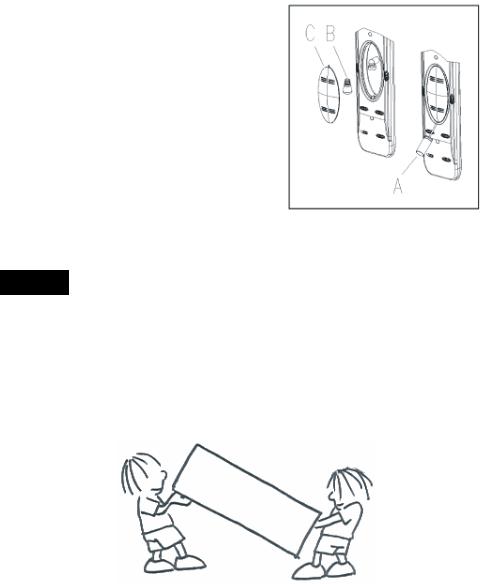
Replacing The Light Bulb
1.Unplug the unit from the power supply,
2.Remove the refrigerator light cover with a minus screw driver, and take out the cover.
(A)
3.Change the present light bulb with a new one of not more than 15 W. (B)
4.Replace the light cover (C) and after waiting 5 minutes plug the unit.
TRANSPORTATION AND CHANGING OF PART- 6. INSTALLATION POSITION
Transportation and Changing of Installation Position
•The original packages and foamed polystyrene (PS) can be concealed if required.
•In transportation the appliance should be tied with a wide stripe or a strong rope. The rules written on the corrugated box must be applied while transporting.
•Before transporting or changing old installation position, all the moving objects (i.e., shelves, crisper…) should be taken out or fixed with bands in order to prevent the shake.
Changing of Door Opening Direction (For some models)
In case you need to change door-opening direction, please consult the domestic after sales service.
UK - 9 -

PART- 7. BEFORE CALLING YOUR AFTER SALES SERVICE
If your refrigerator is not working properly, it may be a minor problem, therefore check the following, before calling an electrician to save time and money.
What to do if your refrigerator does not operate;
Check that;
•There is no power ,
•The general switch in your home is disconnected ,
•The thermostat setting is on «1 / MIN» position ,
•The socket is not sufficient. To check this, plug in another appliance that you know which is working into the same socket.
What to do if your refrigerator performs poorly;
Check that;
•You have not overloaded the appliance ,
•The doors are closed perfectly ,
• There is no dust on the condenser ,
• There is enough place at the rear and side walls.
If there is noise;
The cooling gas which circulates in the refrigerator circuit may make a slight noise (bubbling sound) even when the compressor is not running. Do not worry this is quite normal. If these sounds are different check that;
•The appliance is well levelled
•Nothing is touching the rear.
•The stuffs on the appliance are vibrating.
If your fridge is not cooling enough;
Your fridge is designed to operate in the ambient temperature intervals stated in the standards, according to the climate class stated in the information label. We do not recommend operating your fridge out of stated temperatures value limits in terms of cooling effectiveness.
Climate Class |
Ambient Temperature (°C) |
|
T |
Between 16 and 43 |
(°C) |
ST |
Between 16 and 38 |
(°C) |
N |
Between 16 and 32 |
(°C) |
SN |
Between 10 and 32 |
(°C) |
UK - 10 -
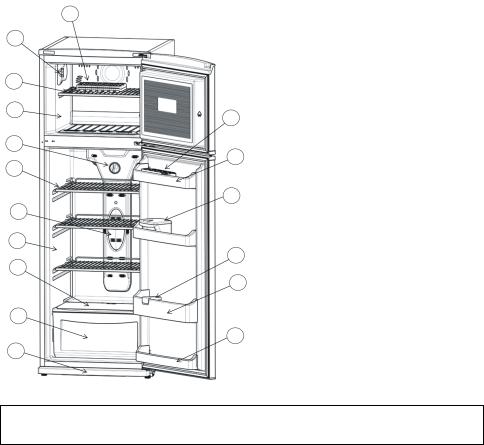
•Tropical Climate Class is described as between 16°C and 43°C of ambient temperatures according to EN ISO15502 standards.
•Appliance complies with EN15502, IEC60335-1 / IEC60335-2-24, 2004/108/EC standards.
Recommendations
•If the appliance is not used for long time (for example during the summer holidays) unplug and clean the refrigerator leaving the door open to prevent the formation of mildew and smell.
•To stop the appliance completely, unplug from main socket (for cleaning and when the doors are left open)
PART- 8. |
|
THE PARTS OF THE APPLIANCE AND THE |
||
|
|
COMPARTMENTS |
||
2 |
||||
|
|
|||
1 |
|
|
|
|
|
|
|
A) FREEZER COMPARMENT |
|
3 |
|
|
B) REFRIGERATOR COMPARTMENT |
|
A |
10 |
1) FREEZER TERMOSTAT BOX |
||
|
|
|||
4 |
|
|
2) ICE TRAY |
|
|
11 |
3) FREEZER SHELF |
||
|
|
|||
5 |
|
4) REFRIGERATOR THERMOSTAT BOX |
||
|
|
|||
|
|
12 |
5)REFRIGERATOR SHELVES |
|
6 |
|
6) REFRIGERATOR LAMP BOX/COVER |
||
|
|
7) CRISPER COVER |
||
|
|
|
||
B |
|
8) CRISPER |
||
|
9) KICK PLATE |
|||
|
|
13 |
||
7 |
|
10) EGG HOLDER |
||
|
|
|||
|
|
14 |
11) TOP SHELF |
|
|
|
|
12) AROMATIC BOX (*) |
|
8 |
|
|
13) BOTTLE HOLDER (*) |
|
|
|
15 |
14) BOTTLE SHELF |
|
|
|
15) BOTTOM SHELF |
||
9 |
|
|
||
(*) Optional
This presentation is only for information about the parts of the appliance. Parts may vary according to the appliance model.
UK - 11 -

The symbol on the product or on its packaging
indicates that this product may not be treated as household waste. Instead it shall be handed over to the applicable collection point for the recycling of electrical and electronic equipment. By ensuring this product is disposed of correctly, you will help prevent potential negative consequences for the environment and human health, which could otherwise be caused by inappropriate waste handling of this product. For more detailed information about recycling of this product, please contact your local city office, your household waste disposal service or the shop where you purchased the product.
UK - 12 -
Sommaire |
|
AVANT D’UTILISER CET APPAREIL ................................................................. |
14 |
Instructions de sécurité ................................................................................................... |
14 |
Recommandations .......................................................................................................... |
15 |
Installation et branchement de l’appareil ...................................................................... |
16 |
Avant de brancher l’appareil ............................................................................................ |
16 |
FONCTIONS DIVERSES ................................................................................... |
17 |
Réglage du thermostat .................................................................................................... |
17 |
Accessoires ...................................................................................................................... |
18 |
Bac à glaçons ............................................................................................................................. |
18 |
Afficheur de température ................................................................................................. |
19 |
RANGEMENT DESALIMENTS .......................................................................... |
20 |
Compartiment réfrigérateur ............................................................................................. |
20 |
Compartiment congélateur ............................................................................................. |
20 |
NETTOYAGEET ENTRETIEN ............................................................................ |
21 |
Dégivrage .......................................................................................................................... |
21 |
Remplacement de l’ampoule ......................................................................................... |
22 |
TRANSPORT ET DEPLACEMENT ..................................................................... |
22 |
Changement du sens d’ouverture de la porte............................................................... |
22 |
AVANT D’APPELER LE SERVICE APRES-VENTE ............................................. |
23 |
ELEMENTS ET COMPARTIMENTS DE L’APPAREIL ......................................... |
24 |
FR - 13 -

SECTION 1. AVANT D’UTILISER CET APPAREIL
Instructions de sécurité
•Si le modèle contient le R600a, voir plaque signalétique qui se trouve sous le réfrigérant (l’isobutane du dispositif de refroidissement), un gaz naturel très écologique mais aussi combustible. Vous devez être prudent lors du transport et de l’installation du dispositif pour vous assurer qu’aucun des composants du circuit de refroidissement n’est endommagé. En cas de dommage, évitez les flammes nues ou les sources d’allumage, ventilez la chambre dans laquelle le dispositif se trouve pendant quelques minutes.
Avertissement: Ne bloquez pas les ouvertures situées dans l’appareil ou dans la structure.
•N’utilisez pas des instruments mécaniques ou autres voies artificielles pour accélérer le processus de dégivrage.
•N’utilisez pas des appareils électriques dans le réfrigérateur ou dans le compartiment congélateur de l’appareil.
•Si cet appareil sert à remplacer un vieux réfrigérateur comportant un cadenas, cassez ou retirez le cadenas, mesure de sécurité, avant de le garder pour éviter que les enfants ne s’y enferment pendant leurs jeux.
•Les vieux réfrigérateurs et congélateurs contiennent des gaz isolants et réfrigérants qui doivent être éliminés convenablement. Assignez entièrement la mise au rebus des appareils au service d’élimination d’ordures de votre localité et contactez l’autorité locale ou votre fournisseur en cas de questions. Veuillez vous assurer que le tuyau d’alimentation de votre unité frigorifique n’est pas endommagé avant que le service d’élimination de déchet ne le récupère.
Remarque importante:
Lisez attentivement ce livret avant d’installer et de mettre en marche l’appareil. Le fabricant n’assume aucune responsabilité quant à une mauvaise installation et utilisation tel que le livret le décrit.
Les produits électriques et électroniques usagés ne doivent pas être jetés avec les ordures ménagères. Renseignez-vous auprès du revendeur où vous avez acheté ce produit pour obtenir la marche à suivre en matière de recyclage.
FR - 14 -

Recommandations
Avertissement : N’utilisez pas d’appareils mécaniques ou d’autres moyens artificiels pour accélérer le processus de décongélation. N’utilisez pas d’appareils électriques dans l’espace de stockage des aliments de l’appareil. N’obstruez pas les ouvertures de ventilation de l’appareil. N’endommagez pas le circuit de liquide réfrigérant du réfrigérateur.
•N’utilisez pas d’adaptateurs électrique ni de dérivations qui risqueraient de provoquer une surchauffe ou un embrasement.
•N’utilisez pas de câbles d’alimentation électrique vieux et endommagés.
•Ne tordez pas et ne pliez pas le câble électrique.
•Interdisez aux enfants de jouer avec cet appareil. Ils ne doivent en aucun cas s’asseoir sur les compartiments ou les étagères, ni se suspendre à la porte.
•Ne branchez pas la prise électrique avec des mains mouillées.
•Ne placez pas de récipients contenant des liquides (bouteilles en verre ou canettes) dans le congélateur, tout particulièrement lorsqu’il s’agit de boissons gazeuses. Ils risqueraient d’exploser pendant la congélation.
•Les bouteilles d’alcool doivent être parfaitement rebouchées et placées verticalement dans le réfrigérateur.
•Ne touchez pas les surfaces de refroidissement, tout particulièrement si vos mains sont mouillées, car vous risqueriez de vous brûler ou de vous blesser.
•Ne mangez pas de la glace qui vient juste de sortir du congélateur.
•Cet appareil n’est pas destiné à être utilisé par des personnes (enfants inclus) dont les capacités physiques, sensorielles ou intellectuelles sont réduites ou bien manquant d’expérience et de connaissances à moins d’avoir été encadrées ou formées au niveau de l’utilisation de l’appareil par une personne responsable de leur sécurité. Surveillez les enfants pour s’assurer qu’ils ne jouent pas avec l’appareil.
•Si le cordon d’alimentation est endommagé, il doit être remplacé par le fabriquant ou par un agent de maintenance ou une personne dûment qualifiée.
FR - 15 -

Installation et branchement de l’appareil
•Cet appareil fonctionne sur courant alternatif 220-240V, 50 Hz.
•Avant d’effectuer le raccordement électrique, assurez-vous que le voltage indiqué sur la plaque signalétique correspond au voltage de l’installation électrique de votre habitation.
•Si la prise de courant et la prise du réfrigérateur ne sont pas compatibles, remplacez cette dernière par une prise adéquate (au moins 16 A).
•L’appareil doit être relié à la terre. Si vous ne disposez pas de prise de terre, nous vous conseillons de contacter un électricien.
•Le fabricant décline toute responsabilité en cas de nonraccordement à la terre conformément aux recommandations de cette brochure.
•N’exposez pas l’appareil aux rayons directs du soleil.
•Cet appareil ne doit pas être utilisé en plein air, ni exposé à la pluie.
•Placez le réfrigérateur loin des sources de chaleur, dans un endroit bien ventilé. Il doit se trouver au moins à 50 cm des radiateurs, fours à gaz ou à charbon et à 5 cm des fours électriques.
•Prévoyez un espace libre d’au moins 15 cm au-dessus de l’appareil.
•Evitez de placer des objets lourds ou un grand nombre d’objets sur l’appareil.
•Si l’appareil est installé à côté d’un autre réfrigérateur ou congélateur, observez une distance minimale de 2 cm pour éviter la condensation.
•La base de l’appareil doit être stable et horizontale. Utilisez les pieds réglables situés à l’avant de l’appareil pour compenser les irrégularités du sol.
•L’espace situé en dessous de l’appareil doit rester libre pour assurer la circulation de l’air. Ne le bouchez pas avec un tapis, etc.
•L’extérieur de l’appareil et les accessoires intérieurs doivent être nettoyés avec une solution d’eau et de savon liquide. L’intérieur doit être nettoyé avec du bicarbonate de soude dissous dans de l’eau tiède. Séchez avec soin et remettez les accessoires en place.
Avant de brancher l’appareil
•Attendez 3 heures avant de brancher l’appareil, afin de garantir des performances optimales.
•Votre appareil neuf peut avoir une odeur particulière. Celle-ci disparaîtra une fois qu’il commencera à se refroidir.
FR - 16 -
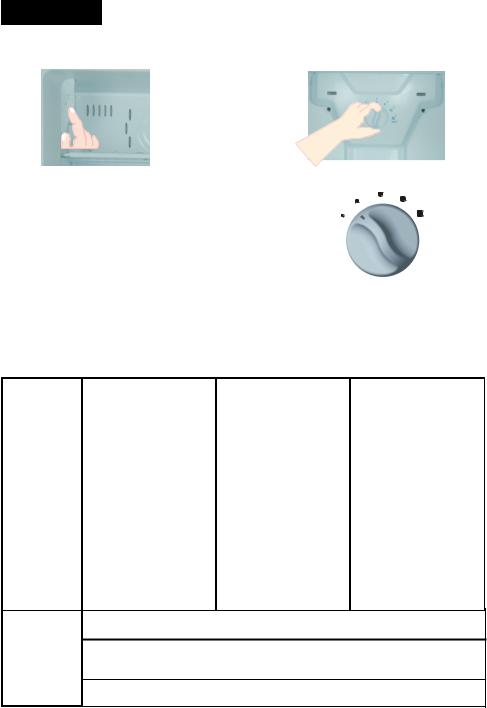
SECTION 2. FONCTIONS DIVERSES
Réglage du thermostat
THERMOSTAT DU CONGELATEUR |
THERMOSTAT DU REFRIGERATEUR |
Les thermostats du congélateur et du réfrigérateur régulent automatiquement la température interne des compartiments. En tournant le bouton du thermostat du congélateur de la position 1 à 4 et le bouton du thermostat du réfrigérateur de la position MIN à MAX, vous obtiendrez des températures plus froides. Lors des saisons froides, vous pouvez régler le thermostat sur des positions plus faibles afin d’économiser de l’énergie.
3
2 4
1 |
5 |
|
MIN
 6
6
MAX
Remarque : les températures du congélateur et du réfrigérateur influent l’une sur l’autre. Par exemple, si le thermostat du réfrigérateur est au maximum, augmentez le thermostat du congélateur afin que le compartiment réfrigérateur soit plus froid.
Commande de la température du congélateur et du réfrigérateur :
SAISON |
HIVER |
PRINTEMPS/AUTOMNE |
ÉTÉ |
|
Température |
10oC < T |
< 16oC |
16oC < T < 25oC |
25oC < T < 43oC |
ambiante |
|
amb |
amb |
amb |
|
|
|
|
|
Thermostat de Placez sur |
la position |
Placez sur la position Placez sur la position |
||
refroidissement |
correcte entre 1 et 2. |
correcte entre 2 et 3. |
correcte entre 3 et 6. |
|
|
Les positions 2.5 et 3 |
Les positions 2.5 et 3 Les positions 2.5 et 3 |
||
|
seront suffisantes selon le |
seront suffisantes selon le |
seront suffisantes selon le |
|
|
modèle du réfrigérateur. |
modèle du réfrigérateur. |
modèle du réfrigérateur. |
|
Thermostat |
Si votre réfrigérateur est situé |
|
Avec des températures |
|
d e |
dans un local très froid avec |
|
ambiantes supérieures à |
|
une température ambiante de |
|
|||
congélation |
|
38ºC, si le compartiment de |
||
10ºC, et si le compartiment de |
|
|||
|
refroidissement est froid avec |
|
refroidissement n’est pas |
|
|
|
suffisamment froid, vous |
||
|
le thermostat de |
|
||
|
refroidissement au minimum, |
|
pouvez régler le thermo- |
|
|
vous pouvez régler le |
|
stat de congélation au |
|
|
thermostat de congélation au |
|
maximum. |
|
|
minimum. |
|
|
|
Les valeurs par défaut de votre réfrigérateur sont 2,5-3 pour le thermostat du compartiment de congélation, et 3 pour le thermostat du compartiment de refroidissement.
Il est recommandé de ne pas changer les positions du thermostat de congélation sauf dans Remarques les conditions visées ci-dessus. Le thermostat de refroidissement peut être réglé selon la
température ambiante comme décrit ci-dessus.
DLes valeurs indiquées dans le tableau sont les positions recommandées du thermostat. Ces valeurs peuvent varier selon les conditions d’utilisation.
FR - 17 -

Remarque : la température ambiante, la température des aliments tout juste rangés et la fréquence d’ouverture de la porte affectent la température des compartiments réfrigérateur et congélateur. Si nécessaire, réglez à nouveau le thermostat.
•Afin d’éviter l’humidité et l’accumulation de bactéries dans le compartiment réfrigérateur, nous vous recommandons de ne pas régler le thermostat sur la position MIN, même s’il n’y a aucun aliment.
•Lors de la mise en marche initiale de l’appareil, pour un refroidissement optimal, nous vous recommandons de laisser l’appareil fonctionner sans interruption durant 24 heures jusqu’à ce qu’il atteigne une température suffisamment froide.
•Pendant ce temps, évitez d’ouvrir la porte trop fréquemment et placez le moins d’aliments possible dans l’appareil.
•Si vous éteignez ou débranchez l’appareil, attendez au moins 5 minutes avant de le remettre en marche ou le rebrancher afin de ne pas endommager le compresseur.
Accessoires
Bac à glaçons :
•Versez de l’eau dans le bac à glaçons et placez-le dans le compartiment congélateur.
•Une fois l’eau complètement gelée, pliez le bac suivant le schéma ci-dessous pour récupérer les glaçons.
FR - 18 -
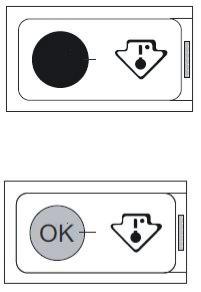
Afficheur de température
Pour vous aider au bon réglage de votre appareil, nous avons équipé votre réfrigérateur d'un indicateur de température, celui-ci étant placé dans la zone la plus froide.
La zone la plus froide du compartiment réfrigérateur se situe au niveau de la clayette inférieure en verre.
Le symbole ci-contre indique l'emplacement de la zone la plus foide de votre réfrigérateur.
L'escape situé directement au dessus de la clayette en verre du bac à légumes est la zone la plus froide du compartiment réfrigérateur comme indiqué par la clayette ou l'autocollant sur la paroi de votre appareil.
Por la bone conservation des denrées dans votre réfrigérateur et notamment das la zone la plus froide, veillez à ce que dans l'indicateur de température "OK" apparaisse.
Si "OK" n'apparait pas, la température moyenne de la zone est trop élevée. Réglez le dispositif de réglage de température sur une position inférieure. L'indication "OK" apparaissant en noir, celui-ci est difficilement visible si l'indicateur de température est mal éclairé. La bonne lecture de celui-ci est corectement éclairé.
À chaque modification du dispositif de réglage de température attendes la stabilisation de la température à l'intérieur de l'appareil avant de procéder, si nécessaire, à un nouveau réglage. Ne modifiez la position du dispositif de réglage de tepérature que progressivement et attendez au moins 12 heures avant de procéder à une nouvelle vérification et à une éventuelle modification.
Important Aprés chargement de L'appareil de denrées fraîches au aprés ouvertures répétées (ou ouverture prolonqée) de la porte, il est normal que l'inscription "OK" n'apparaisse pas dans l'indicateur de température; attendez au moins 12 heures avant de réajuster le dispositif de réglage de température.
Si l'évaporateur du compartiment réfrigérateur (paroi du fond de l'appareil) se couvre anormalement de givre (appareil trop chargé, température ambiante élevée, thermostat sur une position élvée, ouvertures fréquentes de la porte), ramenez progressivement la manette du thermostat sur une position inférieuse, jusqu'à obtenir de nouveau des périodes d'arrét du compresseur. En effet, le dégivrage automatique de compartiment réfrigérateur ne s'effectue que si le compresseur s'arréte par intermittence.
Thermostat à régler
Température correcte
FR - 19 -
